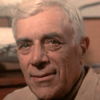Georges Braque

Georges Braque
Georges Braquewas a major 20th-century French painter, collagist, draughtsman, printmaker and sculptor. His most important contributions to the history of art were in his alliance with Fauvism from 1906, and the role he played in the development of Cubism. Braque’s work between 1908 and 1912 is closely associated with that of his colleague Pablo Picasso. Their respective Cubist works were indistinguishable for many years, yet the quiet nature of Braque was partially eclipsed by the fame and notoriety of Picasso...
NationalityFrench
ProfessionPainter
Date of Birth13 May 1882
CityArgenteuil, France
CountryFrance
Thanks to the oval I have discovered the meaning of the horizontal and the vertical.
What greatly attracted me - and it was the main line of advance of Cubism - was how to give material expression to this new space of which I had an inkling. So I began to paint chiefly still lifes, because in nature there is a tactile, I would almost say a manual space... that was the earliest Cubist painting - the quest for space.
If I have called Cubism a new order, it is without any revolutionary ideas or any reactionary ideas... One cannot escape from one's own epoch, however revolutionary one may be.
It is not sufficient that what one paints should be made visible. It must be made tangible.
The space between the dish and the pitcher, that I paint also.
You put a blob of yellow here, and another at the further edge of the canvas: straight away a rapport is established between them. Colour acts in the way that music does...
When objects shattered into fragments appeared in my painting about 1909, this for me was a way of getting closest to the object... Fragmentation helped me to establish space and movement in space.
Perspective is a ghastly mistake which it has taken four centuries to redress.
Work to perfect the mind. There is no certitude but in what the mind conceives.
There is more sensitivity in technique than in the rest of the picture.
I find that it is important to work slowly. Anyone who looks at such a canvas will follow the same path the artist took, and he will experience that it is the path which counts more than the outcome of it, and that the route taken has been the most interesting part.
I am much more interested in achieving unison with nature than in copying it.
When one reaches this state of harmony between things and one's self, one reaches a state of perfect freedom and peace-which makes everything possible and right. Life becomes perpetual revelation.
I couldn't portray a woman in all her natural loveliness... I haven't the skill. No one has. I must, therefore, create a new sort of beauty...